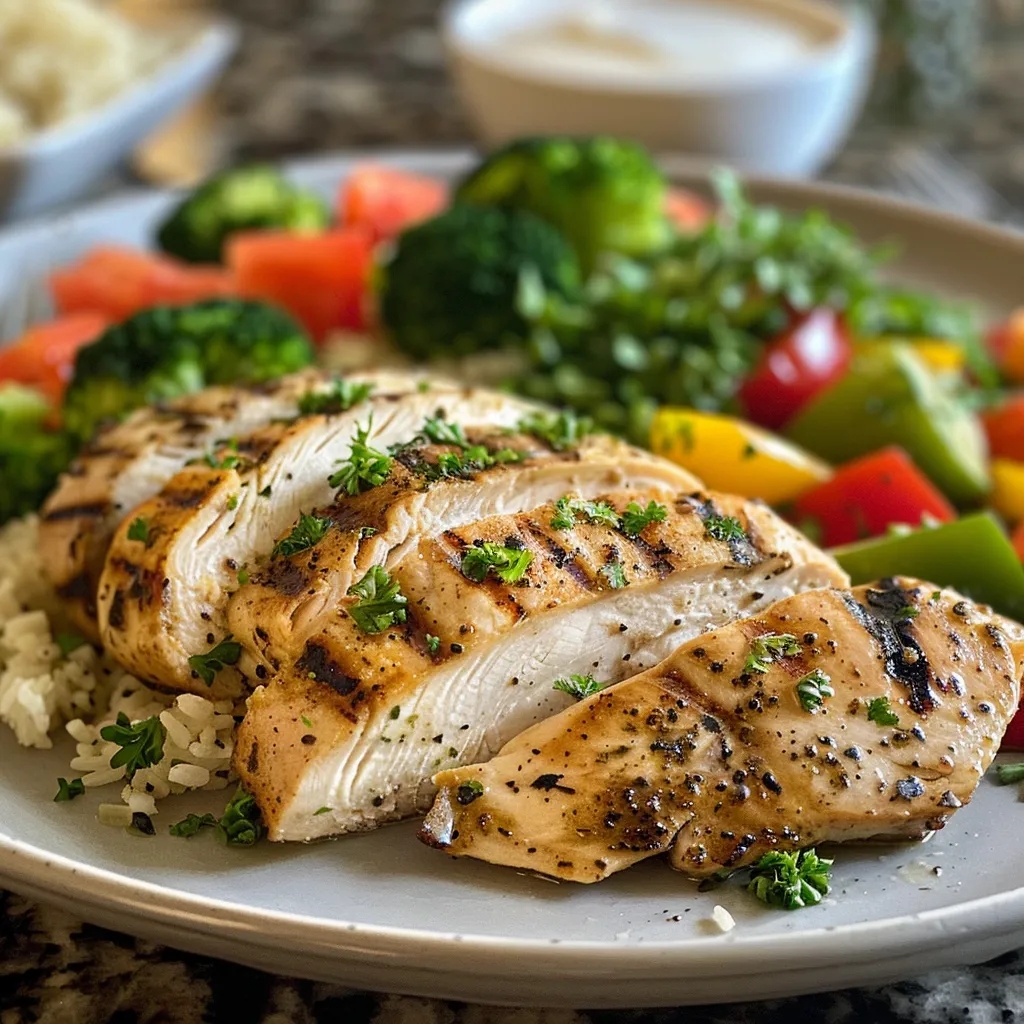Have you ever felt overwhelmed trying to create a healthy meal plan that fits your lifestyle? I know I have! But after some trial and error, I finally built a clean eating meal plan that works for me, and I can’t wait to share it with you! This plan is not only about eating fruits and vegetables but also includes whole grains, lean proteins, and healthy fats. Plus, it’s perfect for those quick family dinners or even when you’re looking for easy pasta recipes. Let’s dive into how I did it!
Why You’ll Love This Recipe
- It’s tailored to your dietary needs and preferences.
- Includes a variety of delicious clean eating options.
- Helps you stay organized with meal prep strategies.
- Perfect for busy weeknights with 30-minute meals.
- Encourages healthy eating habits that last.
Ingredients
Creating a clean eating meal plan starts with the right ingredients. Here’s what you’ll need:
- Fruits
- Vegetables
- Whole grains
- Lean proteins
- Healthy fats
Full ingredient list with measurements is provided in the printable recipe card below.
How to Make the Recipe
Building a clean eating meal plan is a step-by-step process. Here’s how I did it:
- Understand your dietary needs and preferences. Take some time to think about what you enjoy eating and any dietary restrictions you may have.
- Assess your dietary needs by identifying nutritional goals. Are you looking to lose weight, gain muscle, or simply eat healthier? Knowing your goals will guide your choices.
- Identify food sensitivities and track what you eat. Keeping a food diary can help you pinpoint any foods that don’t agree with you.
- Evaluate lifestyle constraints that influence your eating habits. Consider your schedule and how much time you can dedicate to meal prep.
- Create a weekly meal schedule prioritizing nutrient-dense foods. This is where the magic happens! Plan your meals around fruits, vegetables, and whole grains.
- Plan for variety in your meals. Don’t let your meal plan get boring! Incorporate different recipes, like my favorite Healthy Chicken and Broccoli Chinese Takeout.
- Prep ahead efficiently by batch cooking and chopping veggies. This will save you time during the week.
- Select nutrient-dense foods that are lower in calories. Focus on unprocessed food options that are filling yet healthy.
- Implement meal prep strategies for success. Use containers to portion out meals for the week.
- Stay motivated and adjust your plan as needed. Don’t be afraid to tweak your meal plan based on what works for you!
Pro Tips for Making the Recipe
Here are some of my favorite tips to ensure your clean eating meal plan is a success:
- Incorporate easy healthy eating habits into your daily routine.
- Try creamy garlic pasta as a delicious option for a quick family dinner!
- Explore Healthy Eating Books for more inspiration and ideas.
- Don’t forget to include food combining techniques to enhance digestion.
- Make sure to keep your kitchen stocked with healthy staples.
How to Serve
Serving your clean eating meals can be just as fun as preparing them! Here are some ideas:
- Pair your meals with a fresh salad or steamed vegetables.
- Serve whole grain sides, like quinoa or brown rice, to complement your proteins.
- For a comforting weeknight dinner idea, try my White Chicken Enchiladas.
- Don’t forget to add healthy fats, like avocado or nuts, for extra flavor and nutrition!
Make Ahead and Storage
Meal prep is key to sticking with your clean eating meal plan. Here are some storage tips:
- Store prepped meals in airtight containers to keep them fresh.
- Label your meals with dates to ensure you eat them while they’re still good.
- Freeze meals that you won’t eat within a few days to prevent waste.
- Consider using a meal prep app to keep track of your meals and grocery lists.
With these steps, you’ll be well on your way to creating a clean eating meal plan that works for you! Remember, it’s all about finding what fits your lifestyle and makes you feel good. Happy cooking!

How I Built a Clean Eating Meal Plan That Works
Ingredients
Method
- Identify your dietary goals and preferences.
- Assess nutritional needs and food sensitivities.
- Create a weekly meal schedule with nutrient-dense foods.
- Batch cook grains and prep vegetables for efficiency.
- Plan for variety and implement meal prep strategies.

